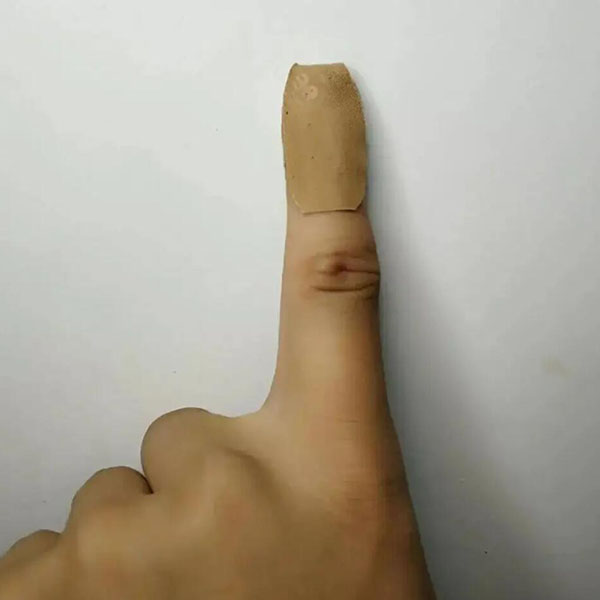(1) Ear
For auricular skin damage, the self-adhesive dressing (hydrocolloid) can be cut into a size of 5cm x 7cm, and the length of the dressing can be folded in half, and a 0.5cm cut along the outer edge of one side of the dressing can be made. How to use: First fix the uncut side dressing on the back of the auricle, and then fix one side of the cut piece along the shape of the auricle. If the wound is wet, a small piece of alginate dressing can be placed on the bottom first, and then the self-adhesive dressing can be applied.
(2) armpit
The foam dressing is radially cut or cut into a “cross” shape for added mobility and comfort. Shave the underarm hair before applying the dressing to increase the adhesion.
(3) Joints such as heels and elbows
Cut the dressing as shown in the figure, and adjust it to fit by slightly overlapping and pasting the cut. In order to prevent loosening, it can be fixed with bandages or put on socks for external fixation.
(4) Thumb/big toe
Cut the dressing into a “cross” shape and fix it.
(5) Fingers/Toes
The wound dressing is cut as shown and used to immobilize the wound at the end of the finger/toe, which is then secured with adhesive tape.
(6) Finger/toe seam
The self-adhesive dressing is cut into a bow-tie shape for fixation.
(7) Multiple finger/toe seams
Cut the dressing to the shape shown in the picture and stick it in place.
(8) Sacrococcygeal
If possible, a buttock-shaped dressing can be used for adhesive fixation; if there is no buttock-shaped dressing, the dressing can be pasted obliquely, that is, one corner of the dressing is aligned with the direction of the gluteal cleft.
Post time: Apr-07-2022






